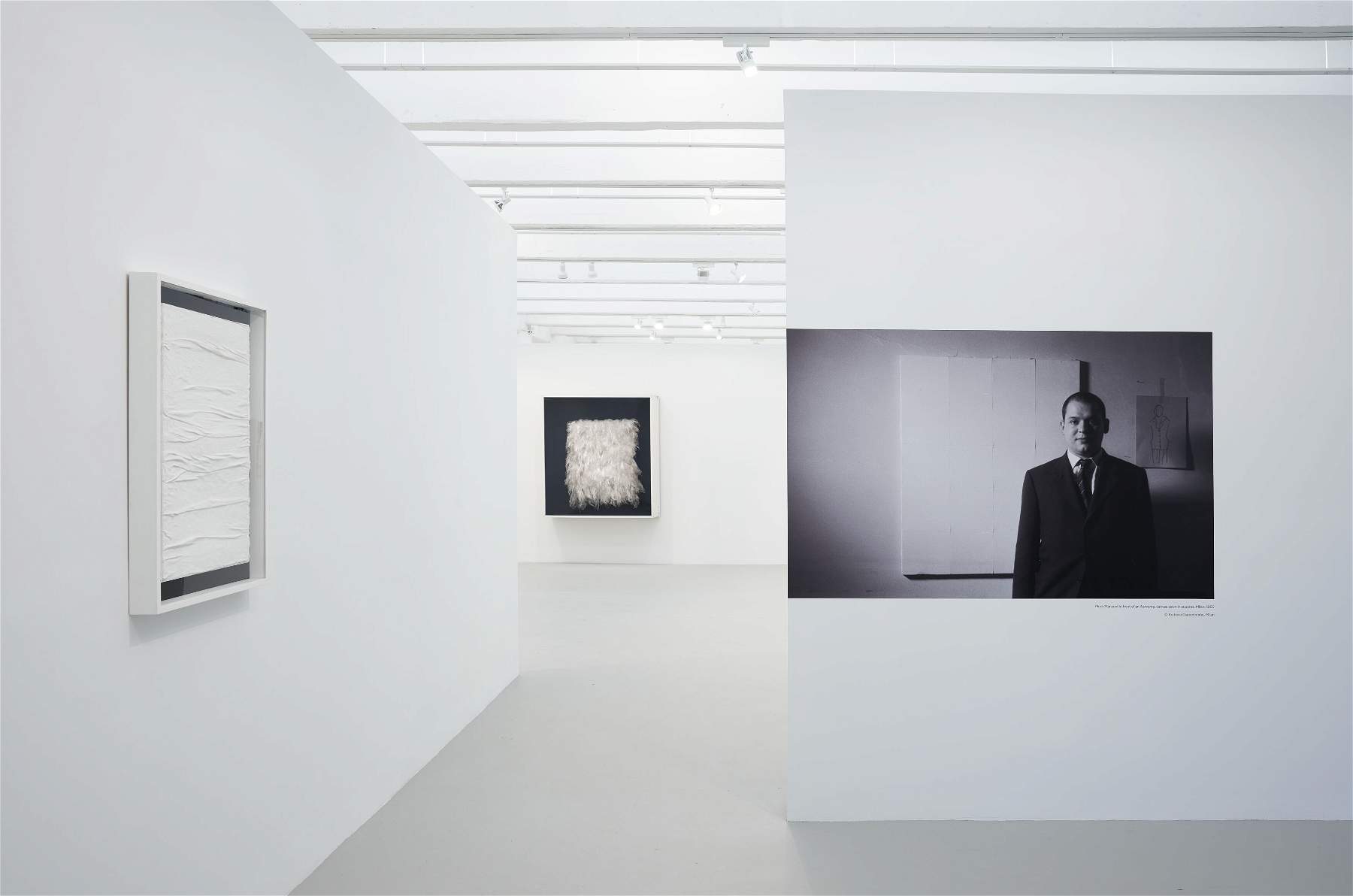For Piero Manzoni a major monographic exhibition in New York that for the first time reconstructs his environments
Entitled Piero Manzoni. “Materials of His Time” and “Lines” the major exhibition that New York ’s Hauser & Wirth Gallery is dedicating to Piero Manzoni (Soncino, 1933 - Milan, 1963), from April 25 to July 26, 2019. Piero Manzoni is one of the most important figures in postwar Italian art and is considered one of the fathers of conceptual art: his career lasted only a very short time (the artist passed away when he was only 30 years old), but this did not prevent Manzoni from becoming one of the most influential artists of his time. The New York exhibition, curated by Rosalia Pasqualino di Marineo, director of the Piero Manzoni Foundation in Milan, is spread over two floors and focuses on two of the most important strands of Manzoni’s production: the Achromes and the Lines. The intent of the exhibition is to present Manzoni as one of the greatest of his time by placing him on the level of masters such as Lucio Fontana and Yves Klein, whose experiments still influence art today.
Manzoni gave birth to an important turning point in the area of the function of the work of art, eliminating from his practice, in 1957, the use of traditional materials, and beginning the series known as Achrome: the term, literally “without color,” was attributed to white works, completely devoid of color, produced between 1957 and 1963. With this cycle, the artist wanted to indicate that the traditional problems of painting were long dead, and that art would speak a new language, allowing artists to use the materials proper to their time. Manzoni produced about eight hundred Achromes, and seventy are featured in the exhibition to testify to the artist’s revolutionary approach to materials (for his Achromes, he used cloth, cotton, fibers, loaves of bread, synthetic and natural furs, straw, stones, polystyrene, and many other unusual materials). In his research, Manzoni rejected the idea of art as representation or expression: rather, he emphasized the value of the work of art as a total space, capable of encompassing even raw materials and the absence of color (he believed that even two colors were too many, since they would distract from a pure and immediate engagement with the surface and forms).
The exhibition also presents, for the first time in New York, the objects that Manzoni indicated in a kind of singular wish list described in a letter he sent in 1961 to his friend Henk Peeters: one room in white fur and another covered in fluorescent paint. In his conviction that the work of art should be a total space, Manzoni in fact conceived the idea of environments resulting from minimal interventions on rooms: during the span of his short life, the immersive spaces he imagined were never created, but for the first time Hauser & Wirth will give substance to Manzoni’s “dream” more than half a century after its conception, thanks also to the support of the Piero Manzoni Foundation.
In the second section of Piero Manzoni. “Materials of His Time” and “Lines,” thirty-five works from the strand of Lines, which Manzoni began to develop in 1959 in parallel with the Achromes, are instead exhibited: these are simple lines crossing rectangular sheets of paper, and traces created with rollers over strips of paper. For Manzoni, the line could be drawn without limitation in length and without involving problems related to composition or size. In total, the artist produced ninety Lines of various sizes, which were then placed in cylindrically shaped containers. The series reached its peak in 1960 with the 7,200-meter-long Line, made in Herning, Denmark. In addition, Manzoni also made, also in 1960, a wooden sculpture entitled Lina of Infinite Length, a purely conceptual work, which in the exhibition is presented in a reconstruction of the show in which Manzoni exhibited in 1959 for the opening of the celebrated Azimut gallery in Milan (where twelve works from the Linea series were exhibited). And again, the New York exhibition displays the short film The Long Lines, presented for the first time with a new soundtrack.
The exhibition is completed with a presentation of archival material from the Guido and Gabriella Pautasso collection: books, documents, and manuscripts typed by Manzoni will allow an in-depth study of his working method. The section, curated by Guido Pautasso and Irene Stucchi, allows a biography of the artist to be traced by bringing back to life his all-personal journey in art, presented lavishly to contemporary audiences. Also, on the occasion of Piero Manzoni. “Materials of His Time” and “Lines,” Hauser & Wirth will present two new catalogs that provide a comprehensive historical and critical analysis of the two main strands of Manzoni’s art.
The exhibition is held at Hauser & Wirth’s 22nd Street office in New York City. Open Tuesday through Saturday from 10 a.m. to 6 p.m., closed Mondays and Sundays, free admission. For more information you can visit the Hauser & Wirth website.
Pictured is a room from the exhibition Piero Manzoni. “Materials of His Time” and "Lines." Ph. Credit Thomas Barratt. © Piero Manzoni Foundation, Milan
 |
| For Piero Manzoni a major monographic exhibition in New York that for the first time reconstructs his environments |
Warning: the translation into English of the original Italian article was created using automatic tools. We undertake to review all articles, but we do not guarantee the total absence of inaccuracies in the translation due to the program. You can find the original by clicking on the ITA button. If you find any mistake,please contact us.





























